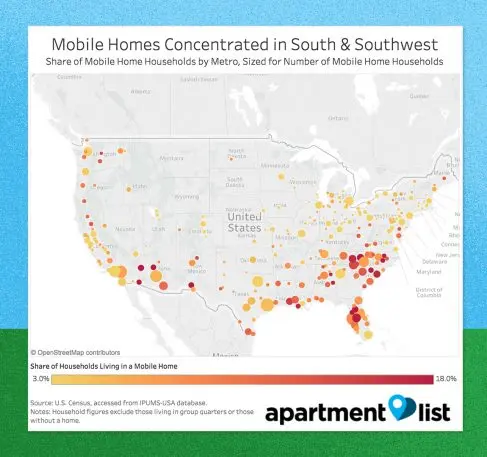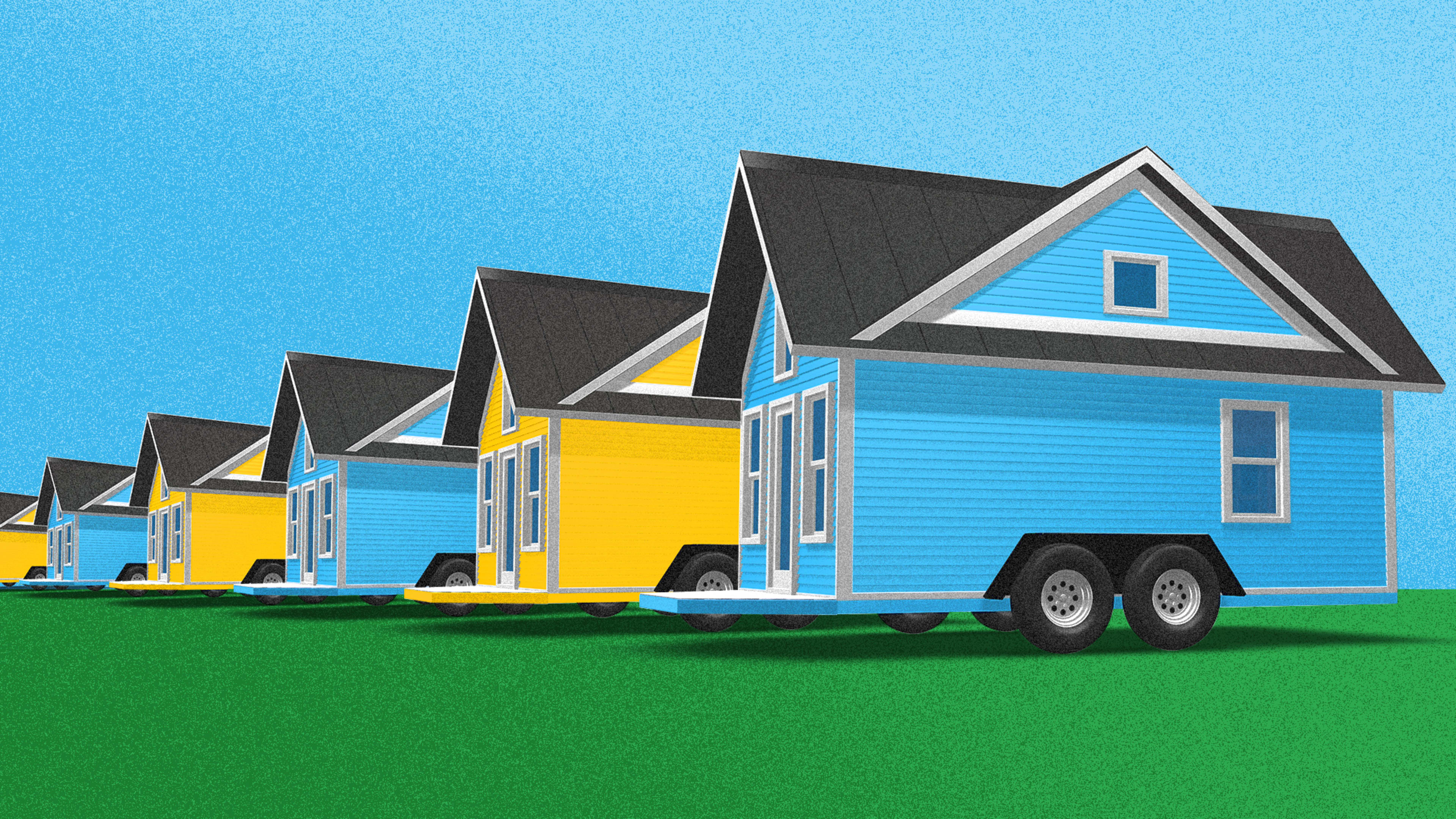For someone living in Sunnyvale, California, where the proximity to the headquarters of companies like Apple has helped push the cost of an average house to around $2 million, and a one-bedroom apartment now goes for more than $2,700 a month, the cheapest place to move might be a local mobile home park called Plaza del Rey.
That might not necessarily last: A hedge fund bought the park in 2015 and has been driving up rent for the land, which residents pay on top of the mortgage for their manufactured homes. (A home, on its own, can sell for as little as $150,000 for a two-bedroom, though space rent is now $2,000 a month.) But it’s an example of a potential solution that can be overlooked in the conversation about affordable housing.
Manufactured homes are already somewhat common. A new report from Apartment List calculates that one in 18 Americans, or 17.7 million people, live in a manufactured home nationwide; the average monthly housing cost is $564, versus $1,057 for a typical house or apartment. In the 100 largest metro areas, people living in mobile homes spent around 40% less, on average, than others. At a time when the lowest-income families can’t rent an affordable two-bedroom apartment anywhere in the country, and only 11% of low-income households get Section 8 support for housing, the report found that 1 in 10 people households living below the poverty line lives in a manufactured home.

“Mobile homes are kind of the last really cheap unsubsidized sorts of housing in most places,” says Sydney Bennet, a senior research associate at Apartment List. They’re particularly common in some areas–in Lake Havasu City, Arizona, for example, around 25% of the population lives in manufactured homes. Production swelled in the 1980s when the government cut funding for affordable housing. But new construction, despite the need, is slow. One challenge is zoning–communities heavily restrict where the homes can be installed, whether on single-family lots or in traditional mobile home parks.
“I think a lot of it really comes down to the stigma around living in a mobile or manufactured home,” says Bennet. “I think there’s still a lot of stereotypes about the communities who live in those areas . . . and maybe policymakers don’t consider it a desirable option.” That’s the case despite the fact that manufactured homes can, of course, be well-designed.
In some areas, this type of housing may not be feasible. “In densely populated areas, land costs are quite high, and it is very difficult to build even high-density affordable housing,” says Laurie Goodman, vice president of housing finance policy at the nonprofit Urban Institute, who has also studied the current state of manufacturing housing and how production has declined from past decades. “Lower density housing, single family, or manufactured housing would be impossible.”
Still, Bennet points out that even in the ultra-expensive Bay Area, some cities are now considering allowing RVs to park in empty parking lots–a temporary solution that echoes the format of a trailer park. Tiny houses, which can also be manufactured affordably but don’t face the same stigma as traditional mobile homes, are slowly beginning to show up in new communities as well as individually on private land. (Most new manufactured homes are now built on private land rather than in communities, Goodman says.)
Manufactured homes, whether tiny or otherwise, could also help in fast-growing areas with a shortage of construction workers. “You have other areas that have lost their manufacturing and factory jobs who would love to have that kind of a plant,” Bennet says. Pre-fab housing production, which uses factories to build the components of buildings and then constructs it onsite–unlike a manufactured home, which can essentially just roll into place–is also growing in response to construction shortages and to save costs.
There are several challenges with manufactured housing–and it can likely only be a stopgap solution before deeper structural issues with housing affordability, and income inequality, can be better addressed. Older mobile homes appreciate slowly or even lose value, so owners can’t build equity like they would with a regular house. When the homes are part of communities that charge rent and that isn’t regulated, as in the case of Sunnyvale, rents can become so unaffordable that residents are eventually forced to leave. And banks don’t offer regular home loans for manufactured homes, charging higher interest rates on chattel loans.
But Fannie Mae is making financing less expensive, which may lead to more manufactured housing. Communities could also change zoning laws to further encourage new building. In some areas, one step might be new support for building tiny homes. “I think that if mobile homes are going to make a re-emergence in more expensive cities, I think we’d probably see it sprout out of the modular, tiny home movement because it is much less stigmatized,” says Bennet.
Recognize your brand’s excellence by applying to this year’s Brands That Matter Awards before the early-rate deadline, May 3.
